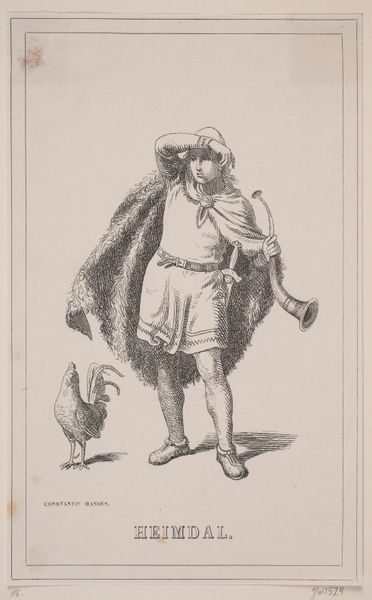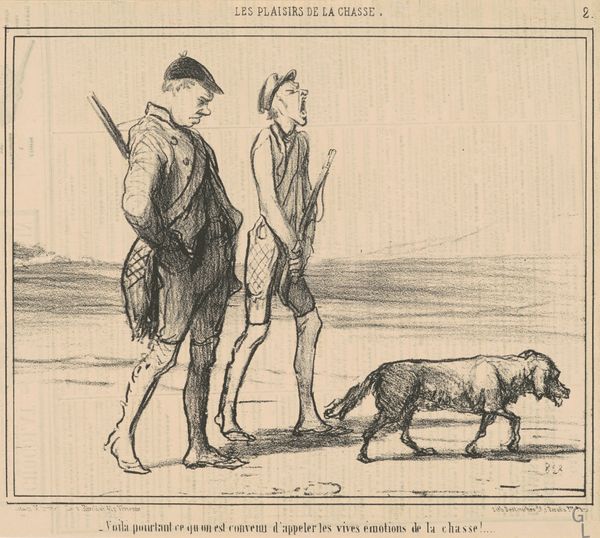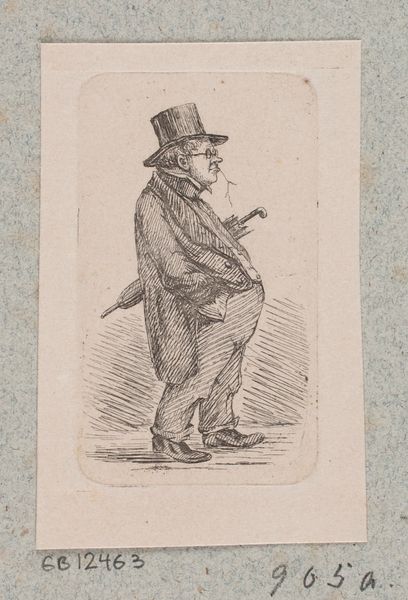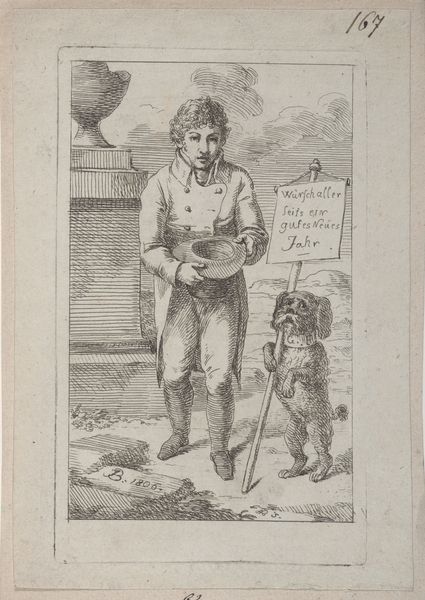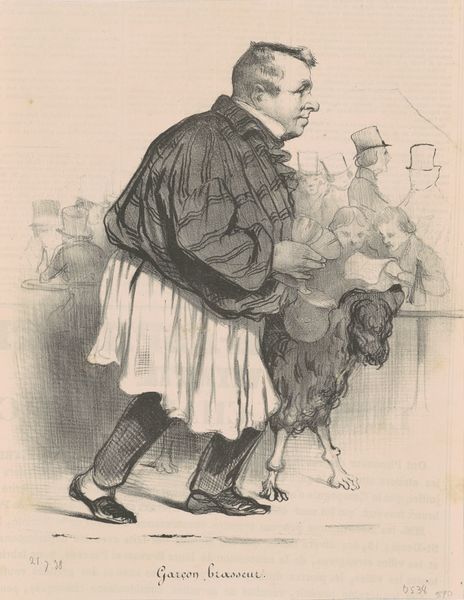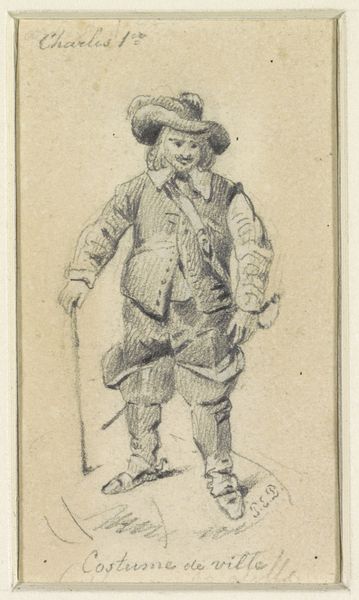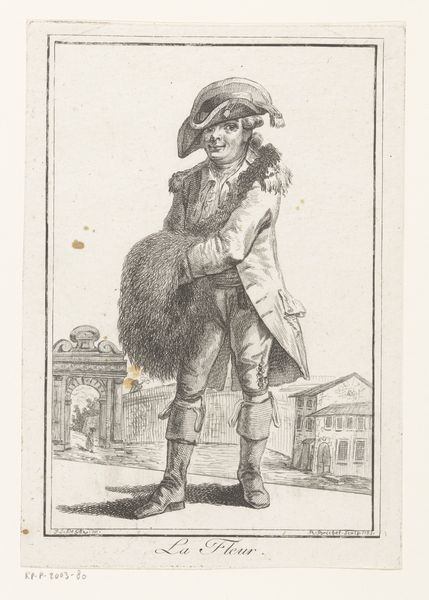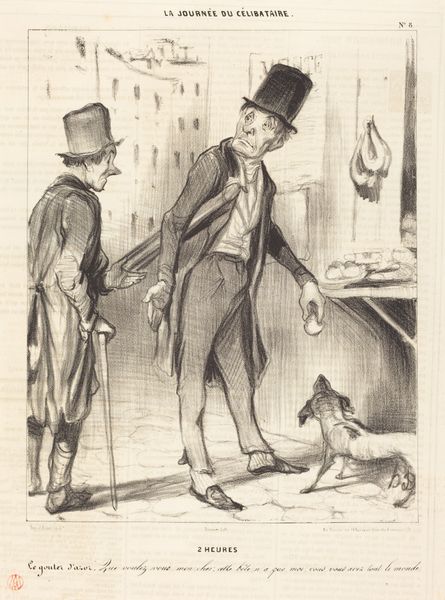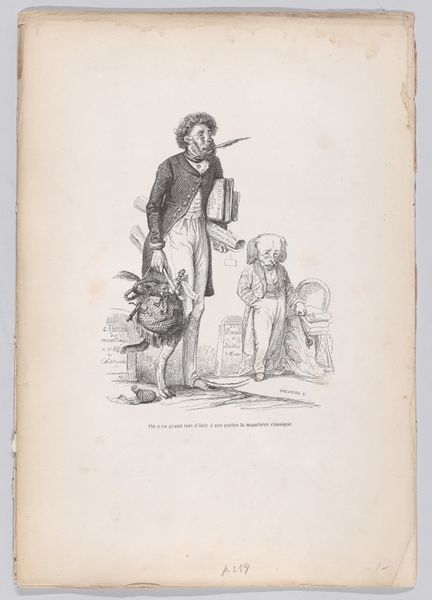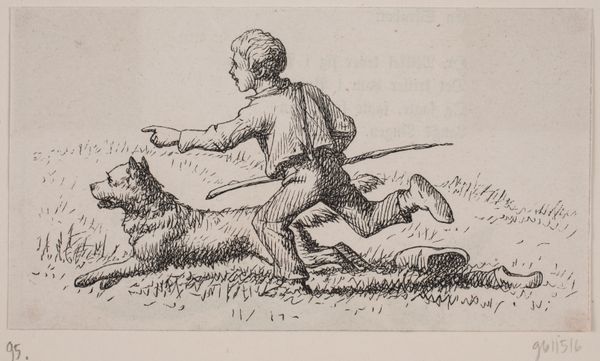
print, woodcut
#
portrait
#
narrative-art
# print
#
romanticism
#
woodcut
#
genre-painting
#
realism
Dimensions: 111 mm (height) x 91 mm (width) (bladmaal)
Editor: This is “Kneeling Beggar with Poodle” by Andreas Flinch, made sometime between 1813 and 1872. It's a woodcut print, and I’m immediately struck by the heavy use of line work, creating a really distinct texture. What catches your eye when you look at it? Curator: The pronounced linear structure indeed dictates much of our perception. Observe how the hatching and cross-hatching not only define form but also create value and shadow, dictating the tonal range of the piece. The parallelism of the lines lends a certain rigidity to the composition, doesn't it? Editor: It does feel quite structured. The lines create the texture, like on the dog’s fur. Why do you think Flinch chose to work in such a linear way? Curator: The linearity serves as more than mere representation. Note how it contributes to a certain flattened effect, typical of woodcut prints, prioritizing graphic impact over illusionistic depth. Are we not compelled to examine how this inherent characteristic influences our reading of the subject matter and the overall emotional tone? Editor: So, the medium itself, the woodcut, almost dictates the style. The linearity also adds a somewhat melancholic air to the scene. I'm curious about how he built up value without using tone. Curator: Precisely. It encourages us to appreciate the manipulation of the medium itself as an expressive tool. Now consider how varying the density and orientation of these lines generates subtle modulations, and how the artist crafts gradients within this framework. Do you agree that this adds dimensionality and emotional resonance to the depicted figures? Editor: Yes, I do. It's almost like a dance of light and shadow created entirely with lines. It's a unique kind of expressiveness. Thank you for helping me really look at it and notice so many details! Curator: Indeed, by attending to the structural elements, we glean a greater appreciation of its conceptual complexities. A close inspection reveals that the artwork is far more multifaceted than first apparent, and that semiotic approach facilitates nuanced appreciation.
Comments
No comments
Be the first to comment and join the conversation on the ultimate creative platform.
